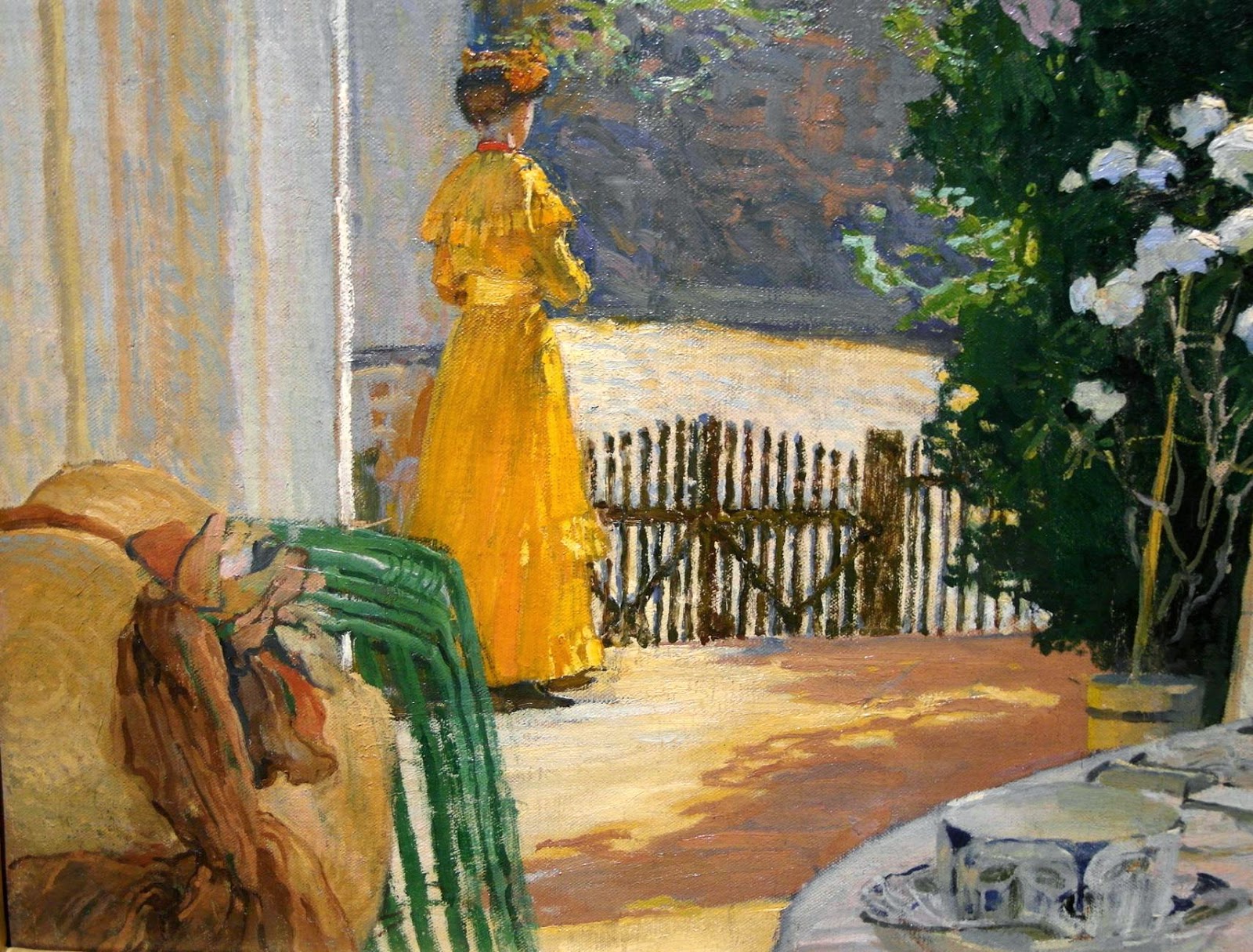 |
| Aleksander Gierymski, , In the Arbour, 1882, fragment |
Eating
on the grass is not only a pleasant way to spend a summer afternoon,
but also a graceful subjects of numerous art works. Thanks to the
invention of paints in tubes, painting in the open air became much, much easier in the 19th century and artists could show their friends what they ate during their
picnic even before Instagram.
 |
| Auguste Renoir, Luncheon of the Boating Party, 1880-1881 |
The
picnic paintings were especially popular in France, where Manet
created his famous The
Luncheon on the Grass
(Le Déjeuner sur l'herbe) and Renoir
painted Luncheon
of the Boating Party
(Le déjeuner des canotiers). Similarly, some Polish 19th-century
painters created picnic paintings and the two most interesting
examples include In
the Arbour
(W altanie) by Aleksander Gierymski and The
May Sun
(Słońce
majowe) by Józef Mehoffer.
 |
Aleksander Gierymski, , In the Arbour, 1882
|
Let's
look at this idyllic scene in the garden. Two elegant but slightly
bored ladies in wigs and exquisite dresses are sipping tea and listening
to the conversation of the men drinking wine. The wine-skin lying on
the ground suggests that this stiff party is slowly warming up. This
picture, titled In
the Arbour,
was painted in 1882 by Aleksander Gierymski – an artist working in
Warsaw, Cracow and Rome. The sitters are dressed up in the clothes
from the rococo era – an 18th-century artistic movement famous for
its bucolic genre scenes filled with charming shepherds and
shepherdesses, cheerful putti and pale, pastel colours.
 |
Jean-Antoine Watteau, Les Champs Elysées, 1717-1718
|
Gierymski's
painting alludes to the artistic and literary tradition of hortus
deliciarum
- the garden of earthly delights. However – unlike the playful,
carefree rococo scenes – In
the Arbour
has an air of melancholy. Even though the arbour is bathed in warm
golden sunlight and the picnickers are drinking appetizing beverages,
their eyes are sad, pensive, as if some deeper sense of unease lurked
under the mask of the idyllic carefreeness.
 |
Józef Mehoffer, The May Sun, 1911
|
Similar
melancholy pervades The
May Sun
(1911) by Józef Mehoffer, a renowned Polish painter and decorative
artist, who was one of the leading exponents of the Young Poland
movement. In 1897, Mehoffer wrote in his diary: “I've got a number
of ideas of light, very sunny, colourful paintings. […] The general
idea is: the idea od life – delight – pleasure – amusement –
light – sun and warmth.” The
most famous example of these sunny paintings is Strange
garden
with a mysterious dragonfly hovering above an the artist's wife and
son standing in the orchard.
 |
| Józef Mehoffer, The Strange Garden, 1903 |
However, The May Sun seems to be equally enigmatic. It depicts a porch with a set
table and the artist's wife standing next to the gate impatiently
awaiting someone. The scene was painted in the artist's summer house
in Janówka near Kraków, where Mehoffer spent a lot of carefree
holidays with his family. The table is filled with two china cups, a
green sugarbowl and a shiny samovar as if the artist was about to
have tea with his beloved wife Jadwiga Janakowska. However, her
folded arms and turned face suggest that there is some mystery in
this Arcadian garden. Hot air filled with the scent of lilac on the
porch seems to quiver with Jadwiga's hidden uneaseness.
Both canvases are wonderful
examples of Polish painting at the turn of the 19th and 20th
centuries. Perhaps because of the current historical situation in
Poland, the artists of this period seemed unable to shake off the
sense of sadness and anxiety, which pervades even these seemingly
idyllic paintings. Interestingly, unlike their French fellow artists,
neither Gierymski, nor Mehoffer painted any food on their picnic
tables. Tea, wine and melancholy – this is all they could offer the
people inhabiting their picnic scenes.
Aleksander
Gierymski, In
the Arbour
(1882), oil on canvas, The National Museum in Warsaw
Józef
Mehoffer, The
May Sun
(1911), oil on canvas, The National Museum in Warsaw
 |
| Józef Mehoffer, The May Sun, 1911 fragment |
The article has been printed (in Polish) in Magazyn Apety: link.
 |
| Józef Mehoffer, The Strange Garden, 1903, fragment |
